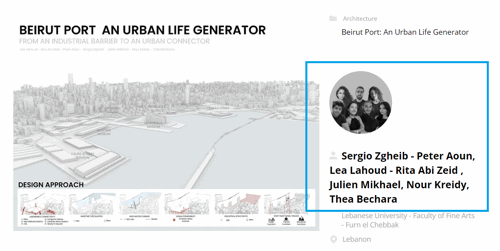EMU Stadium: Sport Hub, Community Park, Well-Being

Project idea
Eastern Mediterranean University (EMU), located in Famagusta, Northern Cyprus, is a well-established public institution founded in 1979. Spread across a spacious urban campus, EMU offers a diverse and multicultural academic environment that brings together students from over 100 countries. The campus is designed as a dynamic educational and social hub, integrating modern academic buildings, recreational facilities, student housing, and green open spaces.
EMU places a strong emphasis on interdisciplinary learning, international collaboration, and cultural engagement, making it an ideal setting for innovative architectural interventions. Its coastal Mediterranean setting, rich historical context, and progressive educational mission offer a unique backdrop for projects that aim to foster community, creativity, and sustainability.
The project investigates an energy-efficient, sustainable, and lightweight construction of cable structure approach designed to withstand the complex climatic conditions of Famagusta, including high temperatures, humidity, limited water resources, and seasonal cyclones. A key challenge was to develop a modular, lightweight structure that can be efficiently assembled on-site and accommodate various activities including football matches, workshops and concerts alongside a variety of other community activities beneath its protective shell. By incorporating native landscaping inspired by the region’s flora and fauna, the design fosters a harmonious relationship between the built environment and nature, contributing to the restoration of the local ecosystem while offering safe and inviting indoor and outdoor spaces for the public. Ultimately, the project aims to create a flexible, multi-use stadium that supports diverse user groups, leverages its strategic location within the university campus, and enhances student life through year-round engagement.
The proposed EMU Stadium project is expected to host the local football team and American football team “EMU Crows”
Project description
The project focuses on the vision of empowering the student community through the creation of a dynamic hub, anchored by a modern architectural extension. This extension is carefully designed to optimize natural sunlight, utilize prevailing winds for passive ventilation, and harmonize with the surrounding campus environment. At its core, the proposal challenges conventional perceptions of stadiums by reimagining their role—not as single-purpose sports venues, but as multifunctional, community-oriented spaces embedded within the university fabric.
A key component of the design is the integration of a circular economy model aimed at fostering economic and social sustainability. By repurposing food and clothing waste into consumables and merchandise for matchdays, the project enables hands-on student participation in sustainable production workshops. These initiatives not only meet the practical needs of students but also contribute positively to the broader campus ecosystem.
To ensure year-round relevance, the stadium is envisioned as a flexible space capable of hosting a wide range of events, including spring festivals, graduation ceremonies, live performances, and other student-centered gatherings. This adaptability allows the venue to remain active during both peak and off-season periods, transforming it into a vibrant focal point for campus life.
Globally, many stadiums have fallen into disuse due to factors such as economic decline, infrastructure degradation, lack of maintenance, and poor integration with urban development. These underutilized structures highlight the need for a paradigm shift in how we conceive such large-scale investments. By embedding multifunctionality, adaptability, and community engagement into its design, this project demonstrates a sustainable model for stadium development—one that is economically viable, environmentally responsive, and socially inclusive.
Technical information
To respond to the region’s challenging climatic conditions—characterized by high temperatures, humidity, and limited water resources—the project prioritizes passive environmental strategies and sustainable technologies. A key feature is the lightweight cable-supported canopy, constructed using SUNTEX lightweight woven solar textile fabric, which not only provides essential solar protection for spectators but also harnesses solar radiation to generate electricity for the stadium's operational needs.
The canopy’s geometry is carefully calibrated: in summer, it offers shade and reduces heat gain, while in winter, it allows beneficial solar rays to penetrate, enhancing thermal comfort. The façade incorporates a kinetic textile system supported by steel cables, providing both flexibility and lightness. This element is oriented to capture prevailing winds, enabling a natural cross-ventilation strategy that maintains airflow and thermal comfort within the stadium.
Spectator seating has been strategically designed with precise angles to ensure optimal sightlines and viewing experiences. In addition, an integrated water management system captures and stores rainwater, which is then reused for irrigating the football pitch—an ecological solution that minimizes dependency on external water sources.
To further enhance comfort, cooling jets are installed throughout the seating areas to improve air circulation and mitigate the chimney effect often caused by stagnant hot air. Surrounding the stadium, native vegetation acts as a natural buffer, reducing noise pollution from surrounding traffic and contributing to a quieter, more serene spectator environment.





































